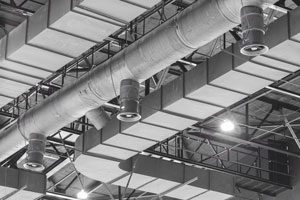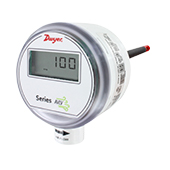 Dwyer Instruments offers a multitude of sensors for monitoring air velocity in HVAC systems. Some of this instrumentation has a simple construction (Pitot tubes, for example) while others are more complex, such as hot-wire anemometers.
Dwyer Instruments offers a multitude of sensors for monitoring air velocity in HVAC systems. Some of this instrumentation has a simple construction (Pitot tubes, for example) while others are more complex, such as hot-wire anemometers.
The initial term and first “hot-wire anemometer” was developed back in 1914 by Louie Vesso King. He is also accredited for King’s Law, which mathematically describes heat transfer in air flows using a heated wire. As the air moves over the wire, it causes a loss of temperature in the wire and removes some of the wire’s heat energy.
Typically, hot-wire anemometers are configured with two separate sensors. The first sensor, the temperature compensation sensor, measures the actual process media temperature inside of the duct or pipe. The second sensor, the velocity sensor, is heated to an elevated temperature which is then cooled by the air flow in the process. The difference in power between the known constant and the effects of the air which is moving through the process, trying to drive the temperature down on the velocity sensor, can then be correlated back to an air velocity. This process is most commonly achieved using a Wheatstone bridge circuit.
A Wheatstone bridge circuit is a diamond-shaped circuit used to measure an unknown electrical resistance. Two legs of the circuit are balanced, one of which includes the unknown component. This type of circuit was popularized by Charles Wheatstone in 1843 and is where it gets its name.

Dwyer Instruments offers air velocity transmitters that use hot-wire anemometer technology, such as the Series AVUL or Series AVLV transmitters. These units provide a linear velocity output signal that can be paired with a building management system to determine air changes, as well as a unique engineered coating which protects the sensors in harsh environments. Dwyer offers selectable velocity ranges up to 4000 FPM for AVUL models, and for low velocity applications, the AVLV models offer ranges down to 100 FPM. With the ability to change the velocity range to suit the application, one device can fit various air velocities found in HVAC system applications.
